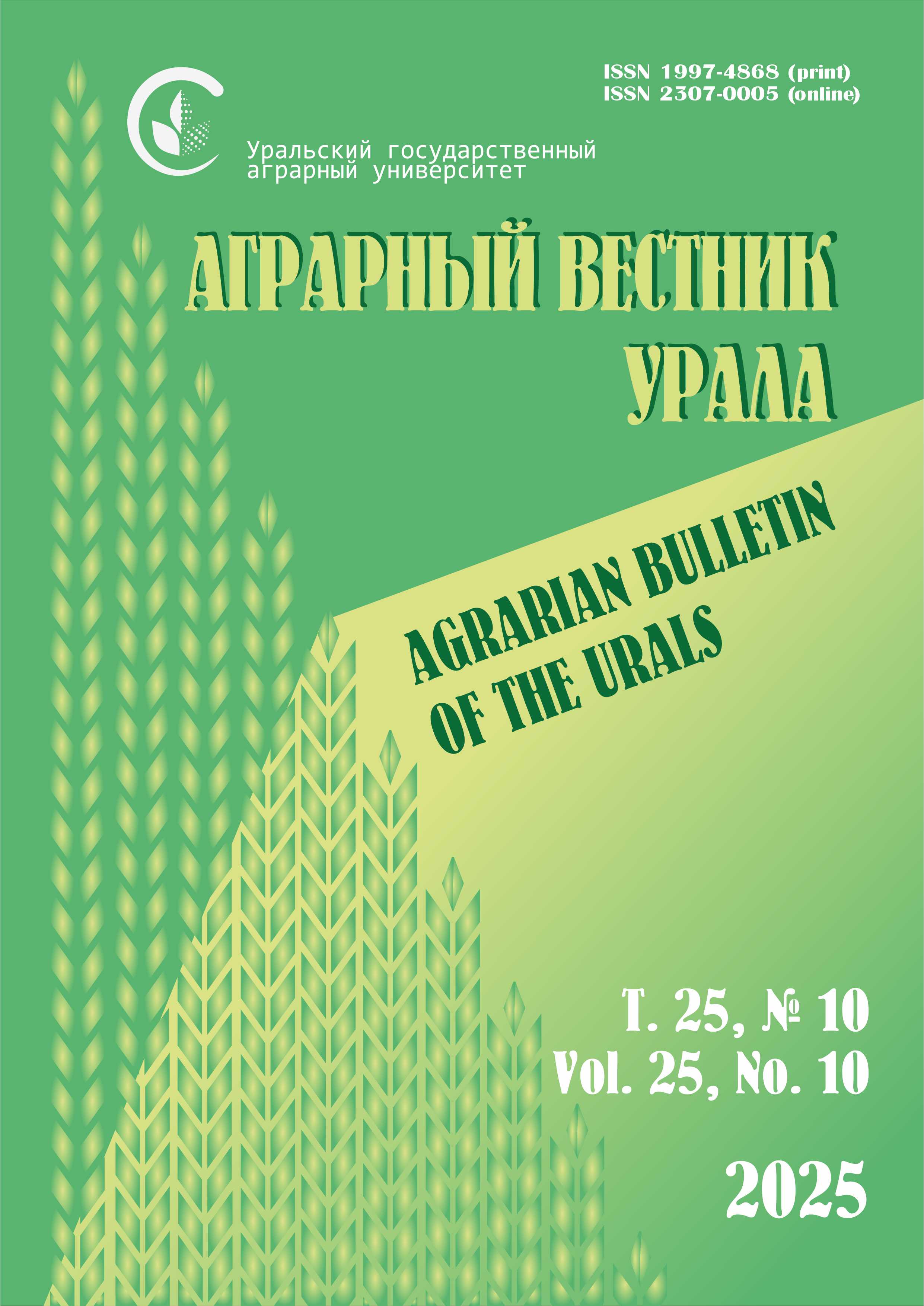N. V. Gaponov
All-Russian Lupine Scientific Research Institute – branch of the Federal Williams Research Center of Forage Production and Agroecology, Michurinskiy settlement, Bryansk region, Russia
E-mail: This email address is being protected from spambots. You need JavaScript enabled to view it.
Volume 25 No. 6
Date of paper submission: 12.02.2025, date of review: 31.03.2025, date of acceptance: 21.05.2025.
Published: 06/30/2025
Abstract. The purpose is to study the biochemical composition of white lupine (Lupinus albus L.) of the Degas variety and to conduct a comparative analysis with the main crops of the legume family (Fabaceae) as sources with a high content of vegetable protein. To study the bioavailability of nutrients of white lupine in the composition of complete compound feeds for non-human primates - rhesus monkeys (Macaca mulatta) – and to estimate the cost of production of complete compound feed based on lupine, as well as the cost of metabolic energy and other essential nutrients per 1 head per day. Research methods. The article raises the urgent issue of using an alternative protein source from white lupine (Lupinus albus L.) with high biological value for feeding primates (Macaca mulatta) in modern economic conditions. The scientific novelty lies in the fact that white lupine, due to its nutritional properties and in combination with other feed ingredients, contributes to the creation of high-quality feed, effective nutrient conversion and improved economic results in breeding primates. Results. In the current conditions, it is important to optimize diets using white lupine as the main source of plant protein with high biological availability and its effect on the physiological status of primates. The results of the experiment confirm that the use of white lupine in the structures of complete compound feeds can improve the nutritional value of diets. Special attention is paid to the assessment of the bioavailability of nutrients of white lupine (Lupinus albus L.) in the body of M. mulatta primates. It was found that when white lupine was included in the diet structure in an amount of 10 %, it improved the digestibility of crude protein relative to the control group by 5.5 %, crude fat by 0.99 %, and crude fiber by 1.84 %. When white lupine was included in the diet structure in an amount of 20 %, it improved the digestibility of crude protein relative to the control group by 9.28 %, crude fat by 6.5 %, and crude fiber by 5.98 %. The economic effect is also significant: the inclusion of 10 % lupine reduces the cost of compound feed by 4.35 %, and with a 20 % content, savings reach 14.49 % per 1 kg of complete compound feed. In experiments with primates, the use of white lupine showed a significant reduction in nutrient costs by 1 head: in the group with 20 % lupine, energy, raw and digestible protein costs decreased by 48.8 %, 47.22 % and 51.3 %, respectively, and with a content of 10 % – by 25 %, 26.38 % and 39.2 %. Thus, the integration of white lupine into the diets of non-human primates demonstrates a significant increase in nutritional value and a reduction in maintenance costs, without violating the physiological status of M. mulatta.
Keywords: white lupine; primates; alkaloidity; nutritional value; bioavailability; metabolic energy; digestibility; extrapolation
For citation: Gaponov N. V. Bioavailability of nutrients in primate diets based on white lupine. Agrarian Bulletin of the Urals. 2025; 25 (06): 887‒899. https://doi.org/10.32417/1997-4868-2025-25-06-887-899 (In Russ.)
Download the full text of the article












